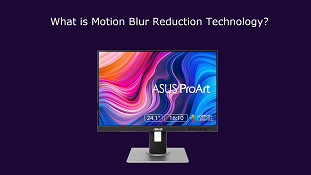What Is Motion Blur Reduction Technology?
Ghosting is undoubtedly a nuisance and severely hinders a gaming experience. Eminent motion clarity is indeed important as it not only improves the gaming experience but also prevents headaches caused by the noticeable motion blur. As a result, motion blur technology is common and is available in less expensive monitors such as the AOC CQ27G1 as well.
How does the Motion Blur Technology Function?
Motion Blur Reduction Technology uses backlight strobing to help minimize motion blur. During the interval between the transition of pixels, the backlight is turned off and then strobed only on the LCD frames which have been completely refreshed.
Motion Blur Technology’s Different Names:-
Given by various manufacturers, Motion Blur Technology is also referred to as:
- ULMB (Ultra Low Motion Blur) – NVIDIA
- ELMB (Extreme Low Motion Blur) – ASUS
- DyAc (Dynamic Action Sync) – BenQ Zowie
- VRB (Visual Response Boost) – Acer
- 1ms MPRT – LG
- PureXP (Pure Experience) – ViewSonic
However, motion blur technology does have its consequences too. Motion blur reduction can cause Strobe Crosstalking (double image effect), flickering, microstuttering, etc. Also, another drawback is that blur reduction technology cannot function simultaneously with FreeSync or G-Sync. To sum it up, the efficiency of the blur reduction depends on your GPU and your overall system rig. While Motion Blur Reduction Technology isn’t guaranteed to improve the gaming experience, it is nonetheless vital for achieving good motion clarity.

